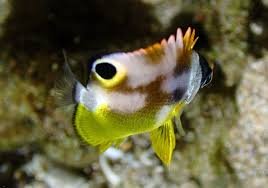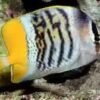Dragons and Their Connection to Natural Elements in Chinese Spring Festivals
Spring festivals in China are deeply rooted in ancient traditions that honor nature, renewal, and cosmic harmony. Among the most significant symbols in these celebrations is the dragon (龙, lóng), a mystical creature associated with power, prosperity, and natural forces. Unlike the fearsome dragons of Western mythology, Chinese dragons are benevolent beings that govern the elements, particularly water, wind, and rain, making them central figures in agricultural celebrations and seasonal transitions.
During spring festivals, dragons appear in dances, rituals, and artistic representations, embodying the connection between humans and nature. This article explores the role of dragons in Chinese spring festivals, focusing on their symbolic meanings, interactions with natural elements, and significance in cultural traditions.
1. The Symbolism of Dragons in Spring Festivals
Dragons as Guardians of Nature
In Chinese cosmology, dragons are revered as celestial beings that regulate natural forces. They represent the cycle of renewal, making them key figures in spring celebrations, where people seek good fortune and agricultural abundance.
- Rain-bringers – Dragons are believed to control rainfall, ensuring prosperous harvests.
- Wind and storm masters – In Chinese folklore, dragons summon favorable winds to cleanse the land.
- Earthly and heavenly balance – The dragon symbolizes yin-yang harmony, bridging the elements of earth, water, fire, and air.
During spring festivals, invoking the dragon’s presence through ceremonies and performances is a way to welcome the new season with prosperity and balance.
The Dragon and the Spring Zodiac Connection
Spring festivals often align with the Chinese zodiac, where the Dragon (辰, chén) is one of the most auspicious animals. People born under the Dragon sign are thought to inherit the vitality and power of nature, making springtime an ideal period for worshipping dragon spirits and seeking their blessings.
- In years of the Dragon, spring festivals are especially grand, with larger dragon dances and ceremonies.
- Dragon years are associated with natural abundance, further strengthening the belief in the dragon’s link to seasonal change.
2. Dragons and the Elements in Chinese Spring Festivals
The Water Dragon and Rain-Seeking Rituals
Water dragons are among the most revered mythical beings in Chinese folklore, particularly in spring rituals that honor rainfall and agriculture. In ancient times, farmers conducted dragon worship ceremonies to ensure that spring rains nourished their crops.
- “Awakening the Dragon” (二月二, Èr Yuè Èr) – On the second day of the second lunar month, the dragon is believed to rise from its winter slumber, bringing rains to the land.
- Dragon temples – In rural areas, farmers visit temples dedicated to the Dragon King (龙王, Lóng Wáng) to offer sacrifices and prayers for favorable weather.
- Dragon well traditions – Certain springs and wells are considered sacred dragon dwellings, where villagers make offerings to ensure an abundant water supply.
The Fire Dragon and Lantern Festival Celebrations
Fire is another powerful element linked to dragons, symbolizing energy, purification, and renewal. In Lantern Festival (元宵节, Yuánxiāo Jié), held on the 15th day of the first lunar month, dragons appear in fire-based performances that celebrate the return of light and warmth.
- Fire Dragon Dance (火龙舞, Huǒ Lóng Wǔ) – In regions like Hong Kong, performers create dragons made of burning incense and fireworks, representing the dragon’s power to drive away misfortune.
- Sky lanterns – The dragon is often depicted on lanterns that float into the night sky, carrying prayers and wishes for a prosperous year.
- Temple fires – Offerings are burned at dragon shrines to seek protection and guidance from the fire dragon spirits.
The Wind Dragon and Kites in Spring Festivals
Spring winds are closely associated with dragons, as they symbolize movement, freedom, and change. This connection is evident in kite festivals that take place during spring.
- Dragon-shaped kites are flown as a way to honor the wind dragon’s spirit and bring good luck.
- Ancient texts describe dragons riding the winds, reinforcing their mythological role as celestial messengers.
- In some traditions, releasing a dragon kite into the sky symbolizes letting go of past misfortunes and embracing new beginnings.
3. The Role of Dragons in Spring Festival Performances
The Dragon Dance: A Celebration of Strength and Unity
One of the most iconic traditions of Chinese spring festivals is the Dragon Dance (舞龙, Wǔ Lóng), a dynamic performance that symbolizes good luck and the renewal of life.
- The long, serpentine dragon moves gracefully, imitating the flow of water and wind.
- The dance is performed to the beat of drums, representing the dragon awakening from hibernation.
- The longer the dragon, the greater the fortune it is believed to bring. Some dragons in performances extend over 100 meters!
The Dragon Dance is performed during:
- Chinese New Year celebrations, marking a fresh start and inviting prosperity.
- Rain-making ceremonies, where the dance mimics dragons summoning rain for crops.
- Community gatherings, promoting unity and cultural heritage.
The Dragon Boat Festival and Water Rituals
Although Dragon Boat Festival (端午节, Duānwǔ Jié) occurs later in the year (around June), it shares a deep connection with springtime water traditions. The event honors Qu Yuan, a legendary poet, but its origins are linked to ancient dragon worship.
- Dragon-shaped boats represent water dragons, which are believed to protect rivers and oceans.
- Splashing water during races mimics the dragon’s power over rain and storms.
- Offerings of zongzi (粽子, glutinous rice dumplings) are made to appease river dragons, ensuring safe and bountiful waters.
4. Dragons in Spring Festival Decorations and Art
Dragon Symbols in Spring Couplets and Calligraphy
During the Lunar New Year, people decorate their homes with red banners (春联, Chūnlián) featuring dragon-themed calligraphy and poetry. These decorations:
- Invoke the dragon’s blessing for good fortune and happiness.
- Represent strength, power, and ambition, particularly for businesses and scholars.
- Often feature phrases like “龙腾四海” (The dragon soars across the seas), symbolizing success and expansion.
Dragon Motifs in Spring Festival Costumes and Ornaments
Many traditional New Year’s outfits feature dragon embroidery, particularly for:
- Children’s clothing, as dragons are seen as protectors of youth.
- Temple robes, worn by priests during rituals invoking dragon spirits.
- Jewelry, such as gold and jade dragon pendants, which are believed to bring prosperity and longevity.
Conclusion
Dragons are deeply intertwined with Chinese spring festivals, acting as powerful symbols of natural forces, renewal, and cosmic harmony. Through rain-seeking rituals, fire dances, kite festivals, and dragon boat traditions, they bridge the human world with the elemental forces of nature.
Their presence in performances, architecture, and decorations ensures that each spring season is blessed with prosperity, balance, and spiritual renewal. As these ancient traditions continue, the dragon remains a timeless guardian, guiding people toward a harmonious and flourishing future.



